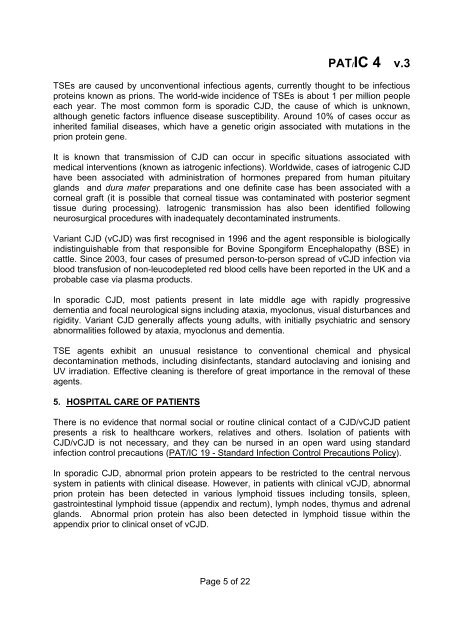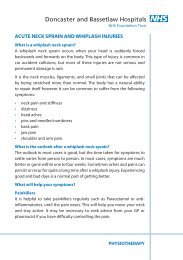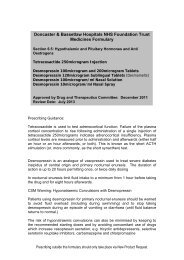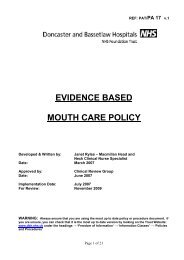VARIANT CREUTZFELDT-JAKOB DISEASE (vCJD) AND ...
VARIANT CREUTZFELDT-JAKOB DISEASE (vCJD) AND ...
VARIANT CREUTZFELDT-JAKOB DISEASE (vCJD) AND ...
Create successful ePaper yourself
Turn your PDF publications into a flip-book with our unique Google optimized e-Paper software.
PAT/IC 4 v.3<br />
TSEs are caused by unconventional infectious agents, currently thought to be infectious<br />
proteins known as prions. The world-wide incidence of TSEs is about 1 per million people<br />
each year. The most common form is sporadic CJD, the cause of which is unknown,<br />
although genetic factors influence disease susceptibility. Around 10% of cases occur as<br />
inherited familial diseases, which have a genetic origin associated with mutations in the<br />
prion protein gene.<br />
It is known that transmission of CJD can occur in specific situations associated with<br />
medical interventions (known as iatrogenic infections). Worldwide, cases of iatrogenic CJD<br />
have been associated with administration of hormones prepared from human pituitary<br />
glands and dura mater preparations and one definite case has been associated with a<br />
corneal graft (it is possible that corneal tissue was contaminated with posterior segment<br />
tissue during processing). Iatrogenic transmission has also been identified following<br />
neurosurgical procedures with inadequately decontaminated instruments.<br />
Variant CJD (<strong>vCJD</strong>) was first recognised in 1996 and the agent responsible is biologically<br />
indistinguishable from that responsible for Bovine Spongiform Encephalopathy (BSE) in<br />
cattle. Since 2003, four cases of presumed person-to-person spread of <strong>vCJD</strong> infection via<br />
blood transfusion of non-leucodepleted red blood cells have been reported in the UK and a<br />
probable case via plasma products.<br />
In sporadic CJD, most patients present in late middle age with rapidly progressive<br />
dementia and focal neurological signs including ataxia, myoclonus, visual disturbances and<br />
rigidity. Variant CJD generally affects young adults, with initially psychiatric and sensory<br />
abnormalities followed by ataxia, myoclonus and dementia.<br />
TSE agents exhibit an unusual resistance to conventional chemical and physical<br />
decontamination methods, including disinfectants, standard autoclaving and ionising and<br />
UV irradiation. Effective cleaning is therefore of great importance in the removal of these<br />
agents.<br />
5. HOSPITAL CARE OF PATIENTS<br />
There is no evidence that normal social or routine clinical contact of a CJD/<strong>vCJD</strong> patient<br />
presents a risk to healthcare workers, relatives and others. Isolation of patients with<br />
CJD/<strong>vCJD</strong> is not necessary, and they can be nursed in an open ward using standard<br />
infection control precautions (PAT/IC 19 - Standard Infection Control Precautions Policy).<br />
In sporadic CJD, abnormal prion protein appears to be restricted to the central nervous<br />
system in patients with clinical disease. However, in patients with clinical <strong>vCJD</strong>, abnormal<br />
prion protein has been detected in various lymphoid tissues including tonsils, spleen,<br />
gastrointestinal lymphoid tissue (appendix and rectum), lymph nodes, thymus and adrenal<br />
glands. Abnormal prion protein has also been detected in lymphoid tissue within the<br />
appendix prior to clinical onset of <strong>vCJD</strong>.<br />
Page 5 of 22














